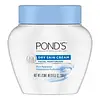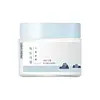What's inside
What's inside
 Key Ingredients
Key Ingredients

No key ingredients
 Benefits
Benefits

 Concerns
Concerns

 Ingredients Side-by-side
Ingredients Side-by-side

Water
Skin ConditioningParaffinum Liquidum
EmollientIsopropyl Palmitate
EmollientPetrolatum
EmollientGlycerin
HumectantStearic Acid
CleansingCeresin
Emulsion StabilisingGlyceryl Stearate
EmollientCetyl Alcohol
EmollientSorbitan Oleate
EmulsifyingEuphorbia Cerifera Cera
AstringentTriethanolamine
BufferingLaureth-23
CleansingParfum
MaskingCarbomer
Emulsion StabilisingDisodium EDTA
DMDM Hydantoin
PreservativeMethylparaben
PreservativeIodopropynyl Butylcarbamate
PreservativeWater
Skin ConditioningGlycerin
HumectantPentaerythrityl Tetraethylhexanoate
EmollientHydrogenated Polydecene
EmollientMacadamia Integrifolia Seed Oil
Skin ConditioningCetearyl Alcohol
EmollientPhenyl Trimethicone
Skin ConditioningPentylene Glycol
Skin ConditioningPolymethylsilsesquioxane
Polyglyceryl-3 Distearate
EmulsifyingHydrogenated Lecithin
Emulsifying1,2-Hexanediol
Skin ConditioningSea Water
HumectantHyaluronic Acid
HumectantHydrolyzed Hyaluronic Acid
HumectantSodium Hyaluronate
HumectantBacillus Ferment
Skin ConditioningMicrococcus Lysate
Skin ConditioningHydrogenated Olive Oil Lauryl Esters
Emulsion StabilisingHydrogenated Rice Bran Oil
Skin ConditioningPanthenol
Skin ConditioningSqualane
EmollientDipotassium Glycyrrhizate
HumectantAllantoin
Skin ConditioningBetaine
HumectantMelia Azadirachta Flower Extract
Skin ConditioningMelia Azadirachta Leaf Extract
Skin ConditioningTheobroma Cacao Seed Extract
AntioxidantCurcuma Longa Root Extract
MaskingOcimum Sanctum Leaf Extract
Skin ConditioningCorallina Officinalis Extract
Skin ConditioningPolyglyceryl-3 Methylglucose Distearate
EmulsifyingGlyceryl Stearate
EmollientEthylhexylglycerin
Skin ConditioningMyristic Acid
CleansingSodium Phytate
Silica
AbrasivePolyglyceryl-10 Stearate
Skin ConditioningButylene Glycol
HumectantDextrin
AbsorbentGlyceryl Stearate Citrate
EmollientDimethicone/Vinyl Dimethicone Crosspolymer
Skin ConditioningBehenic Acid
CleansingCaprylic/Capric Triglyceride
MaskingStearic Acid
CleansingPalmitic Acid
EmollientTromethamine
BufferingAmmonium Acryloyldimethyltaurate/Vp Copolymer
Tocopherol
AntioxidantC12-16 Alcohols
EmollientBehenyl Alcohol
EmollientStearyl Alcohol
EmollientCarbomer
Emulsion StabilisingXanthan Gum
EmulsifyingWater, Glycerin, Pentaerythrityl Tetraethylhexanoate, Hydrogenated Polydecene, Macadamia Integrifolia Seed Oil, Cetearyl Alcohol, Phenyl Trimethicone, Pentylene Glycol, Polymethylsilsesquioxane, Polyglyceryl-3 Distearate, Hydrogenated Lecithin, 1,2-Hexanediol, Sea Water, Hyaluronic Acid, Hydrolyzed Hyaluronic Acid, Sodium Hyaluronate, Bacillus Ferment, Micrococcus Lysate, Hydrogenated Olive Oil Lauryl Esters, Hydrogenated Rice Bran Oil, Panthenol, Squalane, Dipotassium Glycyrrhizate, Allantoin, Betaine, Melia Azadirachta Flower Extract, Melia Azadirachta Leaf Extract, Theobroma Cacao Seed Extract, Curcuma Longa Root Extract, Ocimum Sanctum Leaf Extract, Corallina Officinalis Extract, Polyglyceryl-3 Methylglucose Distearate, Glyceryl Stearate, Ethylhexylglycerin, Myristic Acid, Sodium Phytate, Silica, Polyglyceryl-10 Stearate, Butylene Glycol, Dextrin, Glyceryl Stearate Citrate, Dimethicone/Vinyl Dimethicone Crosspolymer, Behenic Acid, Caprylic/Capric Triglyceride, Stearic Acid, Palmitic Acid, Tromethamine, Ammonium Acryloyldimethyltaurate/Vp Copolymer, Tocopherol, C12-16 Alcohols, Behenyl Alcohol, Stearyl Alcohol, Carbomer, Xanthan Gum
 Reviews
Reviews

Ingredients Explained
These ingredients are found in both products.
Ingredients higher up in an ingredient list are typically present in a larger amount.
Carbomer is a polymer of acrylic acid. Its main role is to create a gel consistency.
A high amount of carbomer can cause pilling or balling up of products. Don't worry, most products contain 1% or less of carbomer.
Glycerin is already naturally found in your skin. It helps moisturize and protect your skin.
A study from 2016 found glycerin to be more effective as a humectant than AHAs and hyaluronic acid.
As a humectant, it helps the skin stay hydrated by pulling moisture to your skin. The low molecular weight of glycerin allows it to pull moisture into the deeper layers of your skin.
Hydrated skin improves your skin barrier; Your skin barrier helps protect against irritants and bacteria.
Glycerin has also been found to have antimicrobial and antiviral properties. Due to these properties, glycerin is often used in wound and burn treatments.
In cosmetics, glycerin is usually derived from plants such as soybean or palm. However, it can also be sourced from animals, such as tallow or animal fat.
This ingredient is organic, colorless, odorless, and non-toxic.
Glycerin is the name for this ingredient in American English. British English uses Glycerol/Glycerine.
Learn more about GlycerinGlyceryl Stearate is a mix of glycerin and stearic acid.
It is used to stabilize the mixing of water and oil ingredients. By preventing these ingredients from separating, it can help elongate shelf life. It can also help thicken the product's texture.
As an emollient, it helps soften skin and supports barrier-replenishing ingredients.
In cosmetics, Glyceryl Stearate is often made from vegetable oils or synthetically produced.
This ingredient may not be fungal-acne safe
Fun fact: The human body also creates Glyceryl Stearate naturally.
Learn more about Glyceryl StearateStearic Acid is a fatty acid. It is an emollient, emulsifier, and texture enhancer.
As an emollient, stearic acid helps soften skin. It aids the skin's protective barrier by preventing water loss. It also provides a gentle cleansing effect without stripping away natural oils.
Stearic acid may also be used to enhance the texture of products. It can add volume and stabilize ingredients such as water and oil. This can help water and oil ingredients from separating.
Sources of stearic acid include animal or vegetable fats/oils such as coconut or shea. It can be naturally found in butter, cocoa butter, shea butter, vegetable fats, and animal tallow.
This ingredient may not be Malassezia folliculitis, or fungal-acne safe.
Learn more about Stearic AcidWater. It's the most common cosmetic ingredient of all. You'll usually see it at the top of ingredient lists, meaning that it makes up the largest part of the product.
So why is it so popular? Water most often acts as a solvent - this means that it helps dissolve other ingredients into the formulation.
You'll also recognize water as that liquid we all need to stay alive. If you see this, drink a glass of water. Stay hydrated!
Learn more about Water